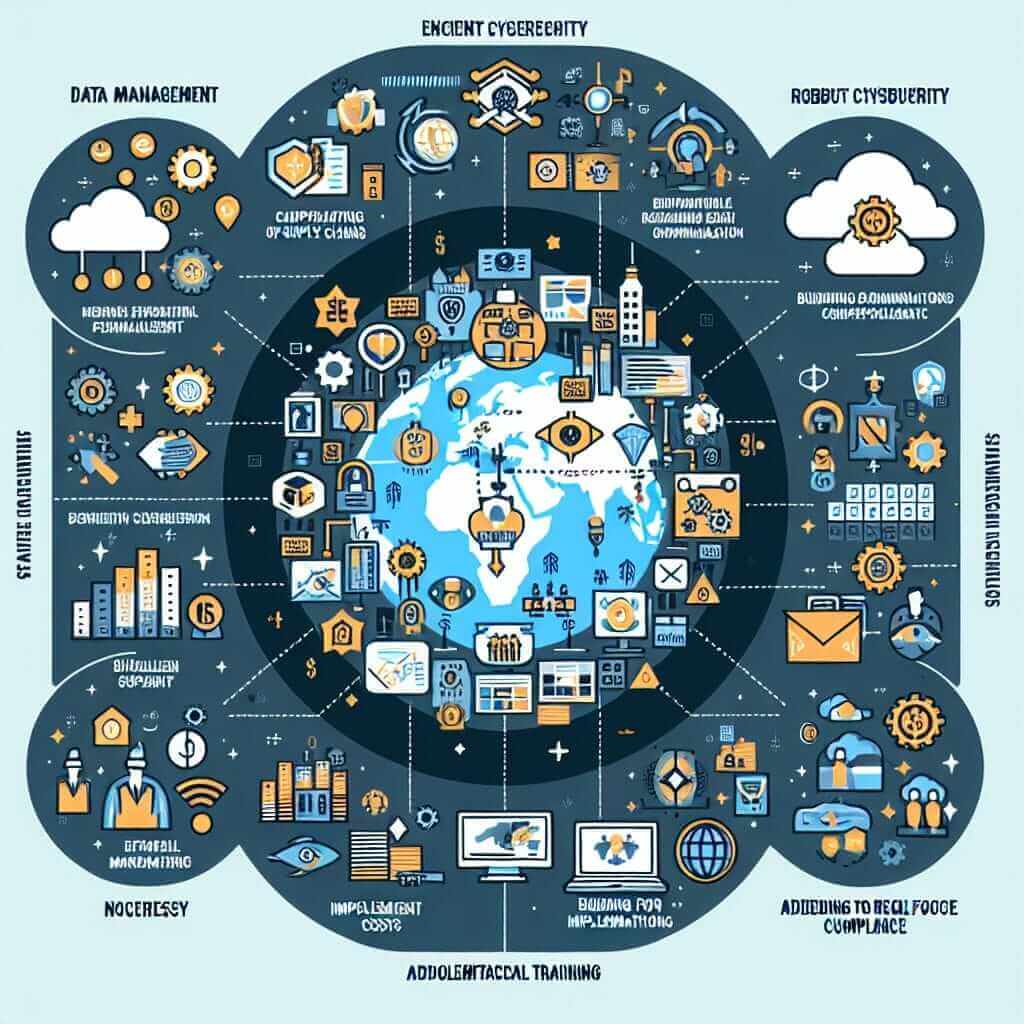The IELTS Reading Test is known for evaluating a test taker’s ability to read and understand detailed and complex texts. One recurring theme in recent tests is the intersection of technology and business logistics, specifically “What are the challenges of managing global supply chains in a digital world?” Given the increasing globalization and digital transformation, it’s critical to understand the intricacies of this topic for comprehensive preparation.
This topic is not only relevant but also highly probable to reappear in future IELTS Reading sections. The digital age brings both opportunities and complexities to global supply chains, making it a compelling subject of analysis.
Reading Passage
Managing Global Supply Chains in the Digital World
In today’s digital era, managing global supply chains comes with a set of unique challenges that can impact the efficiency and resilience of businesses. While digital technologies like the Internet of Things (IoT), blockchain, and artificial intelligence (AI) promise improved visibility and coordination, their integration into supply chains is far from seamless.
The Internet of Things (IoT) connects various devices and sensors within the supply chain, allowing real-time data collection. However, the challenge lies in data management. With a vast amount of data generated every second, companies struggle to process and analyze information promptly. Additionally, IoT devices are susceptible to cybersecurity threats, which can compromise sensitive supply chain data.
Blockchain technology offers a transparent and tamper-proof record of transactions. While this boosts trust among supply chain partners, implementing blockchain is complex and costly. Moreover, establishing standard practices across different industries and countries remains a hurdle.
Artificial Intelligence (AI) enhances decision-making by predicting demand, optimizing routes, and managing inventory. Yet, AI systems require high-quality data, and inaccurate or incomplete data can lead to inefficiencies. Integrating AI into existing systems also demands significant investment in terms of time and money.
Furthermore, the global nature of supply chains introduces challenges related to cultural differences and regulatory compliance. Diverse business practices and regulatory environments across countries add complexity to managing a uniform digital strategy. This requires companies to adapt continually while ensuring compliance with various legal standards.
Lastly, the human factor cannot be ignored. Workers need proper training to adapt to new technologies, which often face resistance. Change management and constant training are crucial to harness technology effectively.
Managing global supply chains in a digital world thus requires a balanced approach that addresses technological, cultural, and human challenges. By overcoming these hurdles, businesses can achieve a more efficient and resilient supply chain.

Questions
Multiple Choice
-
The primary challenge associated with IoT in supply chains is:
- A. Limited data generation
- B. Cybersecurity threats
- C. Low implementation costs
- D. Standard practices across industries
-
Blockchain technology in supply chains is not challenged by:
- A. Transparency
- B. Implementation complexity
- C. Cost
- D. Universal standards
True/False/Not Given
-
IoT devices allow real-time data collection.
- True
- False
- Not Given
-
AI systems do not require high-quality data for efficient functioning.
- True
- False
- Not Given
Matching Information
Match the following technologies with their respective challenges.
-
IoT
-
Blockchain
-
AI
- A. Data management and cybersecurity threats
- B. Complex and costly implementation
- C. Required high-quality data and substantial investment
Answer Key
- B
- A
- True
- False
- A
- B
- C
Common Mistakes
- Misinterpreting Data: Many test-takers may confuse the challenges of different technologies, such as thinking cost issues relate to IoT when they actually relate to blockchain.
- Vocabulary Misunderstanding: Terms like “real-time data,” “tamper-proof,” and “predicting demand” can be tricky if not understood correctly.
- Inaccurate Matching: Incorrectly matching technologies with their challenges due to a lack of detailed reading.
Vocabulary
- Tamper-proof (adjective) – /ˈtæmpər pruːf/: Impossible to alter or manipulate.
- Optimize (verb) – /ˈɑːptɪmaɪz/: Make the best or most effective use of.
- Resilience (noun) – /rɪˈzɪliəns/: The capacity to recover quickly from difficulties.
Grammar Focus
Complex Sentences: Often used in reading passages to convey detailed information.
- Example: “While digital technologies like IoT, blockchain, and AI promise improved visibility and coordination, their integration into supply chains is far from seamless.”
Relative Clauses: Used to provide additional information about a noun.
- Example: “AI, which enhances decision-making by predicting demand, optimizing routes, and managing inventory, requires high-quality data.”
Tips for High Reading Scores
- Practice Regularly: Engage in regular reading practice to improve your speed and comprehension.
- Expand Vocabulary: Develop a robust vocabulary to understand and interpret texts accurately.
- Detail Attention: Focus on key details and look for context clues to answer questions effectively.
- Understand Context: Grasp the main ideas and supporting details by analyzing the context of the passage.